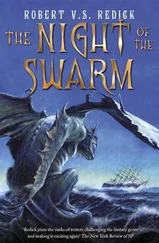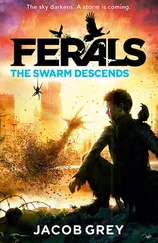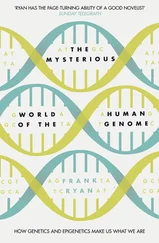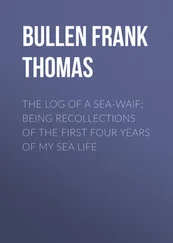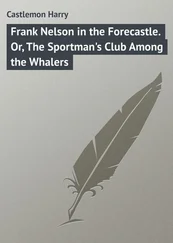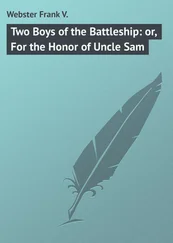Rubbish! The world has no memory. People have memories, but not the world. All that stuff about the planet's memory is esoteric crap.
Do you think so? The yrr remember everything. The yrr are memory.
Weaver feels dizzy.
She checks the oxygen supply. Ideas are tumbling through her mind. The dive seems to be turning into a hallucinogenic trip. Her thoughts disperse in all directions through the darkness of the Greenland Sea.
Where have the yrr got to?
They're here.
Where?
You'll see them.
YOU'RE A PARTICLE moving through time.
You sink through the silent depths with countless others of your kind, a cold salt-laden particle of water, heavy and weary from the heat-draining journey north from the tropics to the inhospitable Arctic reaches. You've gathered in the Greenland Basin, forming an enormous pool of incredibly cold and heavy water. From there you flow over the submarine ridges that lie between Greenland, Iceland and Scotland, and into the Atlantic Basin. On and on you go, over the mounds of lava and deposits of sediment, into the abyss. You're a powerful current, you and the other particles, and near the coast of Newfoundland you're joined by water from the Labrador Sea. It isn't as cold or as heavy as you are. You continue towards Bermuda, and circular UFOs spin across the ocean to meet you, warm, salty Mediterranean eddies from the Strait of Gibraltar. The Greenland Sea, the Labrador Sea, the Mediterranean – all the waters mingle, and you push southwards, flowing through the depths.
You watch as the Earth brings itself into being.
Your path takes you along the Atlantic Ridge, one in a chain of mid-ocean ridges that extend across the oceans. With a mass as large as all the continents put together, they form a network covering sixty thousand kilometres, tipped with peak upon peak of periodically erupting volcanoes. Towering three thousand metres above the seabed, and sometimes separated from the surface by just as much water again, the ridges are evidence of cracks in the Earth. Where their crest is riven, magma rises from underground reservoirs. In the high pressure of the deep-sea, the molten rock doesn't shoot out explosively, but oozes in leisurely bulges. The pillows of lava push their way through the middle of the ridge, forcing it apart with the persistence and impertinence of chubby children, newly born seabed that has yet to find its form. Slowly, incredibly slowly, the ridge moves apart. The seabed is hot where the lava meanders through the darkness of the depths. Earthquakes shake the chasm and the crests on either side. Towards the edges of the rift, the lava cools. Beyond the crests, the topography consists of older stone; the further away from the ridge-crest, the older, colder and denser the rock, until the old, cold, heavy seabed slopes into the abyss. Creeping over the deep-sea plains, studded with mountains and covered with layers of loose sediment, it moves west towards America and east towards Europe and Africa, a conveyor-belt of past ages, until one day it pushes itself under the continents and plunges deep into the mantle of the Earth to melt in the furnaces of the asthenosphere, reappearing millions of years later as red-hot magma in oceanic rifts.
It's an extraordinary cycle. The sea floor moves tirelessly round the globe, fractured by pressure from within and pulled by the weight of its sinking boundaries. A continual straining, pulling and tugging of geolithic labour pains and burial rites shapes the face of the Earth. In time, Africa will unite with Europe. Will reunite with Europe. The continents are moving, not like icebreakers ploughing through brittle crust, but being dragged impassively on top of it, kept in constant motion ever since Rodinia, the first supercontinent, was torn apart in the Precambrian. Even now her fragments still strive to reassemble, as they did when they formed Pannotia and finally Pangaea, before they, too, broke apart. A divided family with a 165-million-year memory of the last complete landmass with a single ocean round it, now dependent on the flow rate of viscous mantle rock, and consigned to wandering the surface of the planet until they reunite.
You're a particle.
You only experience a heartbeat of all that. The Atlantic seabed shifts by five centimetres, and you've already been flowing for a year. Your journey takes you to places where there is life without sunlight. The lava cools rapidly, forming faults and cracks. Seawater pours into the porous new seabed. It streams down for kilometres, stopping just before it reaches the hot magma chambers inside the Earth, then returns, rich with life-giving minerals and warmth. Blackened with sulphide, the water spurts out of chimney-like rock formations as tall as houses, boiling hot, yet never boiling. At that depth, water heated to 350 degrees doesn't boil, it just flows up, dispersing its wealth of nutrients, supplying a hundredfold of what the surrounding waters have to offer. You voyage through the unknown universe has led you to the first outpost of an alien world in which living creatures survive without light. It is home to bushy clumps of metre-long tubeworms, mussels the length of a human arm, hordes of blind white crabs, fish and, most important of all, bacteria. They're primary producers, equivalent to the green plants on the Earth's surface that nourish themselves from sunlight and provide all living creatures with the energy to survive. But these bacteria don't need sunlight: they oxidise hydrogen sulphide. Their source of life comes from deep inside the Earth. They cover the seabed in vast bacterial mats, living in symbiosis with worms, mussels and crabs, while other crabs and fish live in symbiosis with mussels and worms – and all without the need for a ray of sunshine.
Perhaps the oldest life-forms didn't come into being on the surface but here, in the lightless depths. Perhaps, Karen, you're seeing the real Garden of Eden as you travel along the bottom of the Atlantic. There can be no doubting that the yrr are the more ancient of the two intelligent species, one of which inherited firm ground and forfeited its cradle.
Imagine if the yrr were the privileged species.
God's creatures.
TIME TO CHECK THE DISPLAY.
Weaver retrieves her thoughts from their journey past Africa. She has to focus on the present. It feels as though she's been travelling for a century already. A ghostly glow sweeps through the water some distance from the boat, but it's not the yrr, just a swarm of tiny krill, although there's no real way of telling – they might be cuttlefish instead.
2500 metres.
Another thousand metres to the seabed. All around her there is nothing but open water, yet the sonar is making frenzied clicks. Something large is approaching. No – not just approaching. It's heading straight for her, and it's vast. A solid expanse sinking down from above. Weaver's latent fear turns to panic. She flies through the water, banking at 180 degrees, as the thing draws closer. The microphones pipe an empty, unearthly din inside the boat, an eerie wailing and droning that's getting louder all the time. Weaver is tempted to flee, but curiosity prevails. She is far enough away from it and there's no sign that it's pursuing her.
Perhaps it's not a creature.
Banking again, she glides back towards it. They're at the same depth now, and the unknown thing is straight ahead. The Deepflight is rocked by turbulence.
Turbulence?
What could possibly be that big? A whale? But this thing is the size of ten whales, of a hundred whales, or even more…
She turns on the floodlights.
And at that moment she realises that she's closer than she thought. At the very edge of the beam, the thing comes into view. For a second Weaver is thrown, incapable of identifying the smooth surface in front of her or what it might belong to. It drops past her, then something catches in the floodlights. Bold lines, metre-long uprights, followed by curves. They seem horribly familiar, morphing into letters that read: USS hide …
Читать дальше


